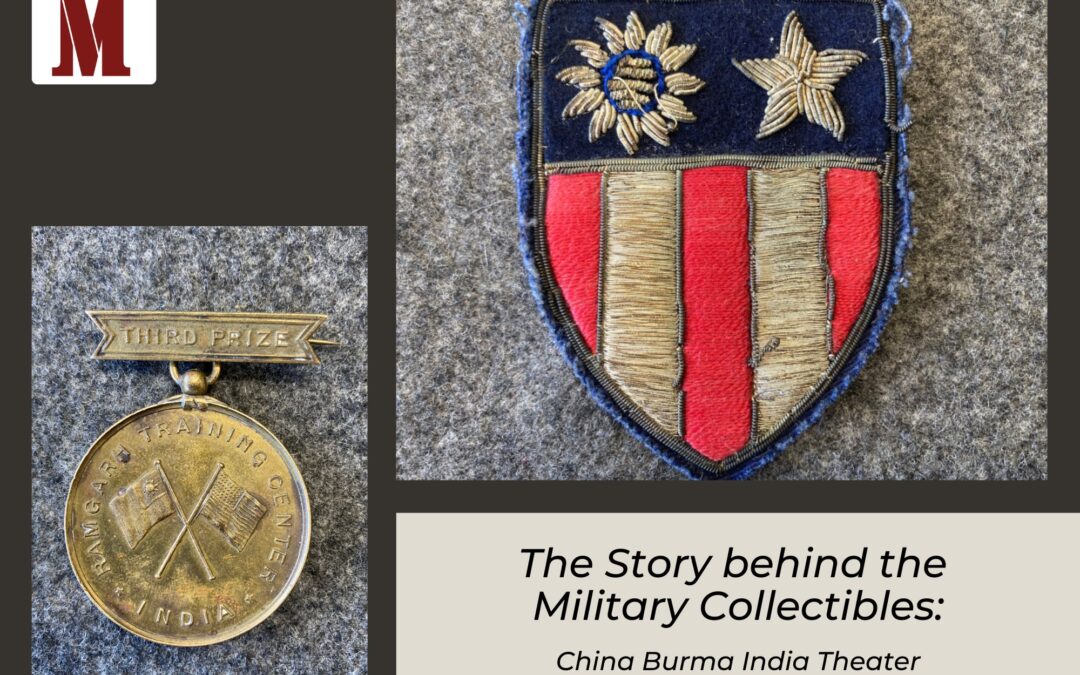I would like to discuss the China Burma India (CBI) Theater and how it generated a popular field of military collectibles. History fans know that the Japanese invasion of China contributed to making several regional conflicts into the Second World War. Japan invaded China in 1937 and waged a bloody war for several years in an attempt to subdue its larger eastern neighbor. The United States wanted this conflict stopped and in 1941 started a series of economic sanctions to pressure Japan to end this war. The Japanese were unable to use their military power to create an acceptable political solution. In November 1941, the U.S. started an oil embargo that forced Japan to either end their China Campaign or find other sources to fuel their war machine. The Japanese decided to embark on a Pacific expansion that provided oil from The Dutch East Indies. In the process they attacked British, French, Dutch and American colonies and protectorates that included the raid on Pearl Harbor.
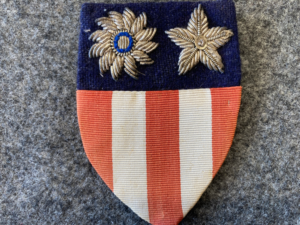
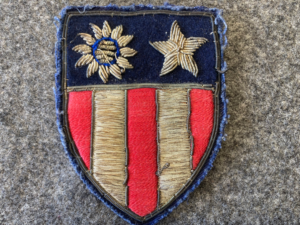
The China Burma India (CBI) Shoulder Insignia (shown above). The one depicted on the right was hand embroidered using different varieties of silver wire to create highlights. Craftsmen in India made these and sold them to American Soldiers stationed in the theater.Soldiers bought all kinds of locally crafted works to enhance their uniforms and send home to impress their friends and relatives.
Training the Chinese Soldier at Ramgarh Training Center
The US declared war on Japan and soon realized that military necessity forced the continuation of the war in China to tie down millions of Japanese troops and prevent them from redeploying to the Pacific. Army Chief of Staff George C. Marshall attempted to keep China in the war by providing Military Advice and Assistance. He sent General Joseph Stilwell to lead American efforts. Stilwell was possibly the most capable General Officer on active service, but he was not a politician and had little time or understanding for the corrupt leadership of the Chinese National Government and Army. The frustrated Stilwell turned his attention to improving the Chinese Soldier so that he could fight the Japanese Army on an equal basis. Large quantities of military arms and equipment were sent to China. The Army Air Force opened bases in India to fly this material into China over the Himalayian Mountains. This some became known by US GIs as flying “the Hump” and millions of tons of every conceivable item was transported into China. Stilwell started a training program to improve the readiness of the Chinese Soldiers placed under his command to drive the Japanese out of Burma.
He established a US Army Training Center in Ramgarh, India where Chinese Soldiers were flown in Over the Hump to be trained by American Advisors. Information about the efforts on this Training Center was kept Secret during the war to hide Chinese corruption from the American Taxpayer. China conducted a very successful Public Relations Campaign both during and after the war in an effort to keep American Aid flowing to their country. When China fell to the Communists in 1949 an US Government Commission investigated to identify the individuals responsible for losing China.
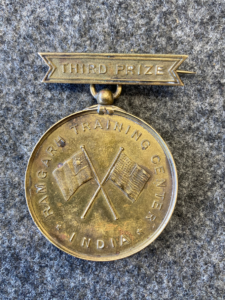
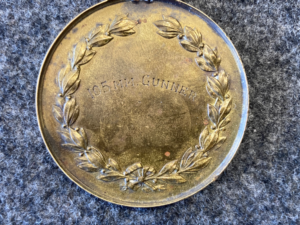
I recently uncovered this prize (shown above) was given to Chinese Soldiers trained by Americans at Ramgarh Training Center. The prize is very similar to a British Campaign Medals and was given as Third Prize to Chinese Artillery Crewmen of the 105mm Howitzer.
Installation of B-29 Super Fortress Bombers
One of the last American efforts involved the stationing of the new B-29 Super Fortress Bomber at Chinese airfields, to fly missions against the Japanese home islands. In the summer of 1944, the Japanese launched a series of land campaigns and advanced hundreds of miles to take these bases. The B-29 were forced to relocate to Tinian in the Pacific and soon to even closer bases to Japan. The effort to keep China in the war was a success but the large amount of war materials sent to the Nationalist Chinese did not prevent Mao and the Chinese Communits from winning the civil war that quickly followed. Today, there are WWII National Chinese collectors who seek items like these that were brought back as souvenirs by American Soldiers that served in the most exotic of theaters, the CBI.
